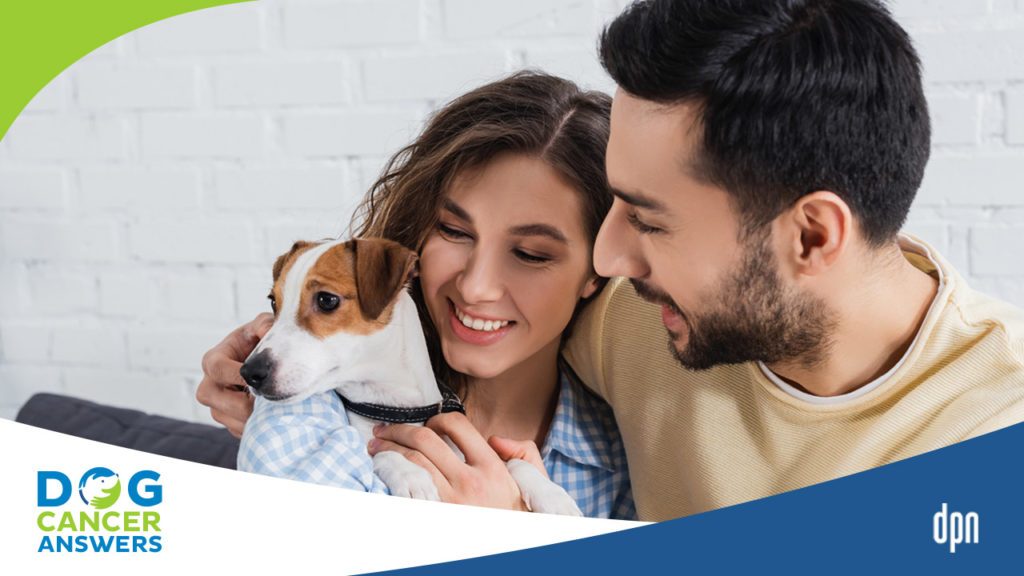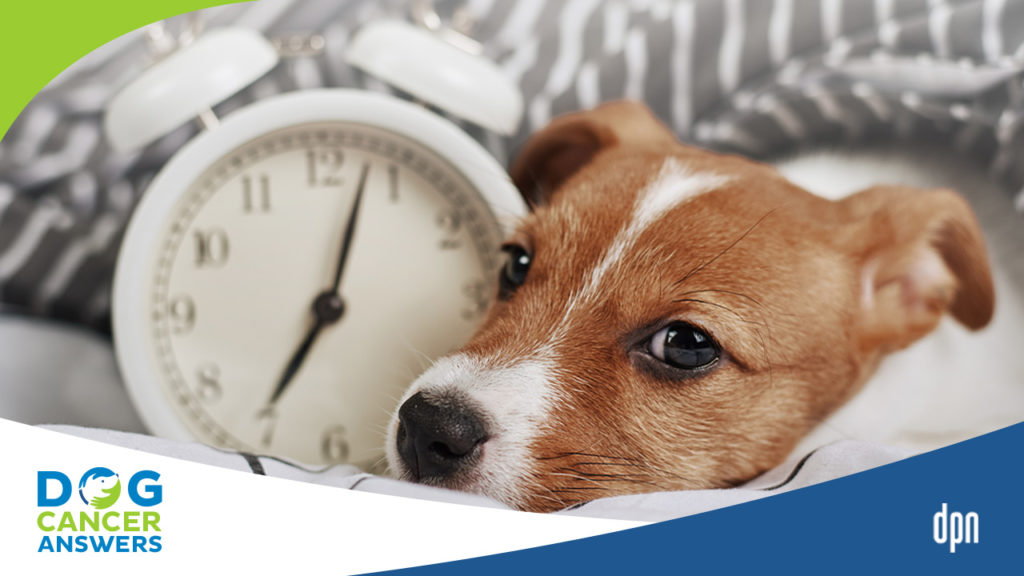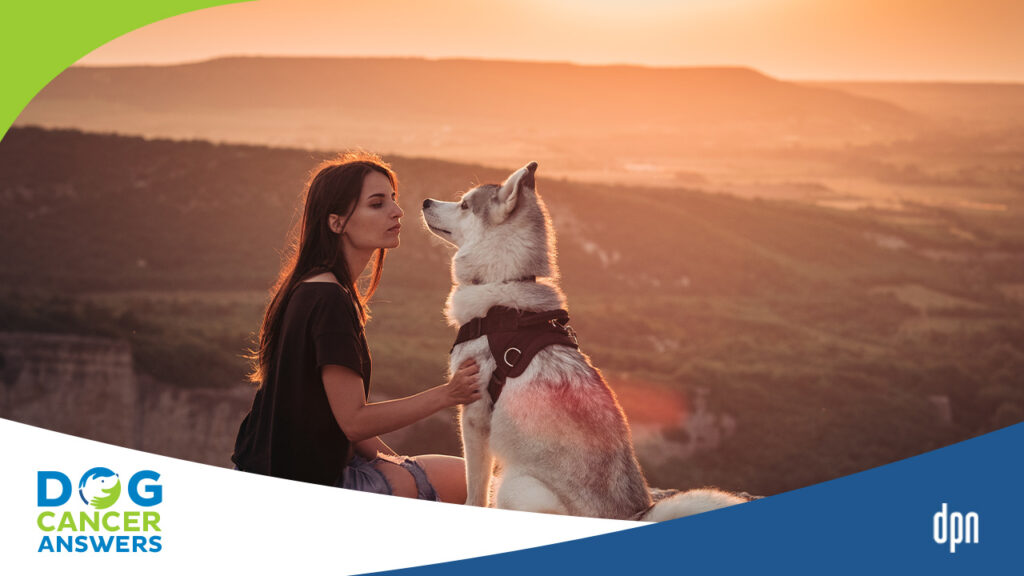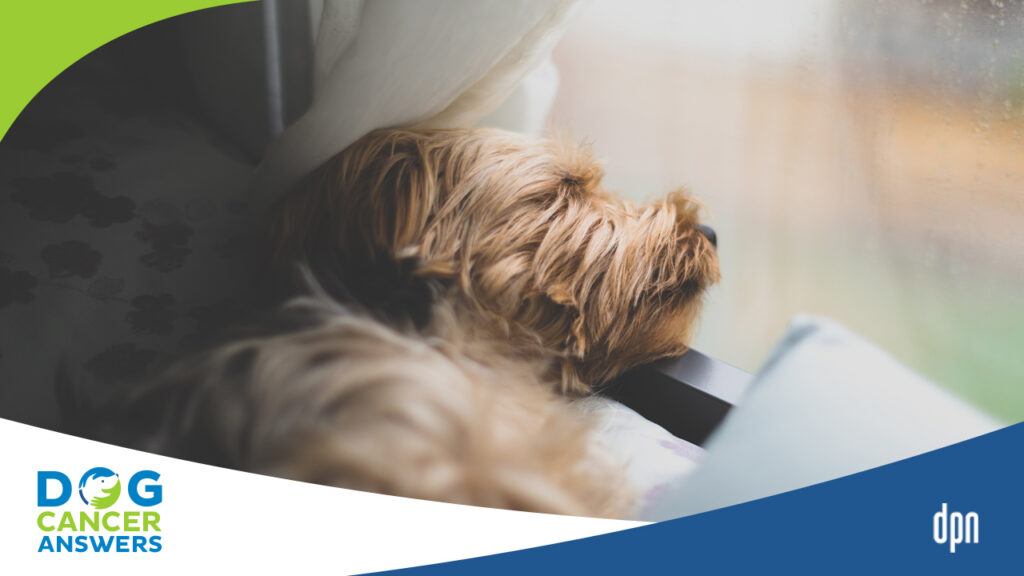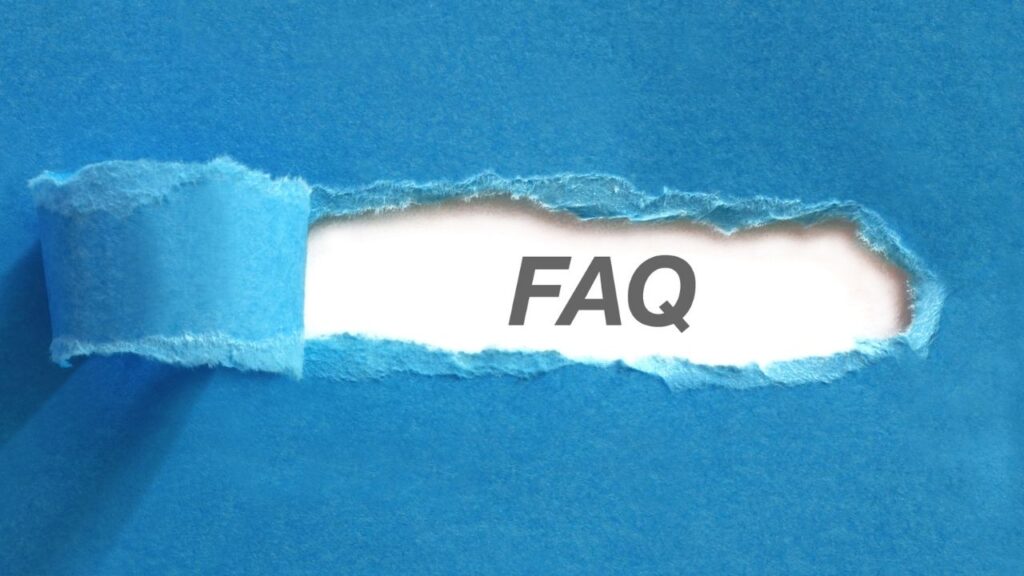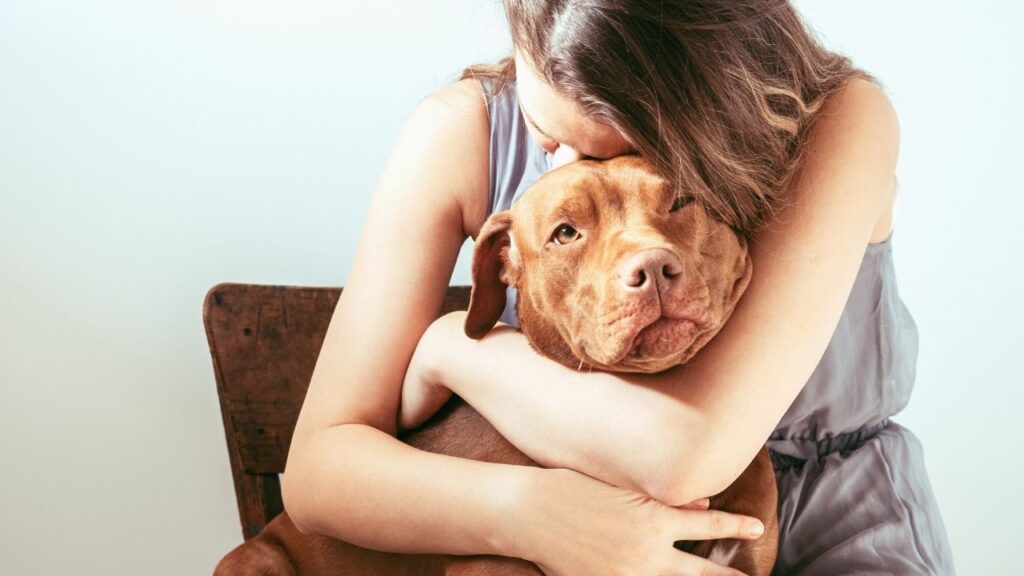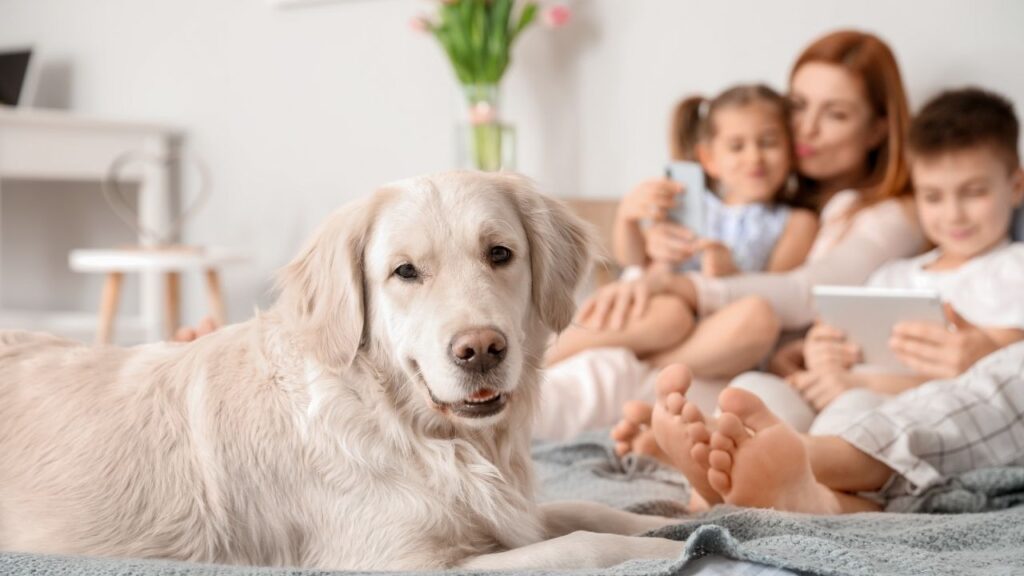Coping When Your Dog Has Cancer: Finding Strength and Hope
Finding out your dog has cancer can fill you with uncertainty and throw your world into chaos. It can be overwhelming to decide the best course of action for your pet that will maximize your time together while ensuring your dog experiences as little suffering as possible. There are many ways to feel and approach this dilemma, all of which are valid and can reflect your personality and circumstances.
Key Takeaways
- Remember that your dog doesn’t know she has cancer, so she is not upset about it the way you are. If she is in physical pain, or has an upset tummy or other symptoms, your veterinarian can help with pain management and life quality strategies.
- Depending upon the cancer type and how early it is caught, some dogs can live for years with cancer. Unfortunately, some of the most common cancers are also the most aggressive. Dogs with lymphoma, for example, if left untreated, have a median survival time of only two months.
- Dogs are not always in pain if they have cancer, and many tumors do not cause pain. However, some cancer types or locations may cause pain. Your veterinarian will be able to help you understand your dog’s pain level.
- Expect change if your dog has cancer. Cancer is sneaky and can adapt to treatments. It also may change over time on its own. Keeping an open mind and flexible attitude will help you stay nimble.
- Staying in observation mode will help you accept your dog has cancer. It will also help you to understand that your dog does not necessarily know there is anything wrong with them. Being a close and loving observer of your dog will help you make treatment choices, offer comfort, and make hard decisions if necessary.
Treating Dog Cancer Is About You, Too
When you first discovered your dog has cancer, you probably went into shock, at least a little bit. Even though cancer is quite common in dogs, the diagnosis still hits most of us hard. In this article, we will help you accept the diagnosis, get a sense of how you want to handle it and give you some concrete steps to take on behalf of your canine family member.
First, let’s look at how your personality will influence your dog cancer journey.
Three Common Responses to Dog Cancer
When learning about a cancer diagnosis, your personality type can influence how you weigh your options for your dog and your family.1 Dr. Demian Dressler, author of The Dog Cancer Survival Guide, outlined three “personality types.”
Using his framing may help you to make decisions now and later, so let’s look at them now. You may feel one more than the others or many all at once. You may also notice that your “personality type” or approach changes in response to what happens. That is OK too!
Active Response
People who actively respond to a cancer diagnosis make it their mission to learn everything they can about their pet’s cancer, the different treatment options, and the best way to give their dog some extra time. They want to spring into action and do everything they can to fight their pet’s illness. People with an active response thrive when they can feel empowered to help their dog through this difficult time. They feel especially motivated when there is a chance for remission and more quality time with their pet.
Balanced Response
Pet parents with a balanced response focus on their dog’s quality of life and are concerned about the consequences of available therapies. They tend to consider and weigh the pros and cons of different options for the pet and the family. They strive for a balance between life expectancy and quality of life.
Comfort Response
Owners with a comforting response focus on minimizing their dog’s suffering and maintaining a good quality of life throughout the cancer process. Comforting owners often do not tolerate side effects from cancer therapies well and may be more likely to choose palliative options. A comforting response often prioritizes the quality over the quantity of time with their dog, wanting to make their dog’s remaining time as comfortable and pain free as possible.
Which Is the Right Response?
One of the most important reasons for considering your personality type and all the other factors in your pet’s care is to recognize that there is no one right decision for everyone.
Your personality will influence the choices that you feel comfortable considering for your dog. There are no wrong answers!
Cancer is a multifactorial disease, which is caused by many things, never just one. It’s also a complex medical condition. Each cancer case is unique; what helps one dog may not help another.
There are no cookie-cutter solutions to dog cancer, no guarantees, and no one treatment that works every time. This is frustrating, often for both you and your veterinarian.
However, you could consider this a reason to let yourself off the hook. If there is no “right way” to treat cancer, you cannot “do the wrong thing.”
Whether you are more focused on treating or palliative care, assertive treatments like chemotherapy or hospice care (or a combination of all of these), you are not wrong.
What you do for your dog’s cancer is about you and your dog, not just what’s available medically.
There is no “one right way” to treat dog cancer. That makes knowing who YOU are, and identifying YOUR priorities critical. A very special episode of DOG CANCER ANSWERS.
Factors to Consider When Your Dog Has Cancer
It can feel overwhelming and confusing when you first discover that your dog has cancer. Many different factors must be considered once you get that diagnosis. Here are some common ones.
Quality of Life: How to Measure It
Since we cannot ask our dogs how they feel, we must rely on our observations to determine their quality of life. There are multiple things to consider when assessing an animal’s quality of life, including:
- whether they are in pain
- their mobility
- their ability to eat
- their mental presence
- their ability to engage with family members
- their ability to experience pleasure
Treatments like chemotherapy and radiation can effectively extend the lifespan of pets with cancer. However, they are also associated with side effects like vomiting, lethargy, weakness, immune system suppression, etc. Veterinarians address side effects with lifestyle changes and medications, of course.
Even so, it is important to consider your dog’s quality of life during treatment and communicate with your veterinarian if you have concerns about the side effects.
Throughout the cancer journey, it can be helpful to use a quality-of-life checklist periodically to keep track of any changes you notice in your dog (see more below).
Life Expectancy
The second big factor to consider is your dog’s life expectancy. Cancer can shorten your dog’s lifespan, giving you less time to spend with them. Depending upon how old your dog is at the diagnosis, they may already be close to the average age for their breed or weight.
Therapies for cancer like chemotherapy or radiation can help extend your pet’s life with the goal of getting the cancer into remission or cured.
You should also take your dog’s current age into account when deciding what to do for him because some treatments can cause side effects that a small increase in time may not offset.
Your veterinarian or oncologist will never be able to guarantee a certain amount of time, because no one has a crystal ball. But getting in the habit of asking the question “how much time do you think this treatment/lifestyle change/supplement/dietary change will get us?” is a good idea. Even a ballpark number will help you to adjust your expectations and make decisions.
Change Happens, So Be Flexible
The nature of cancer is sneaky. When it is caught early, some types of cancer may be treated successfully. However, many cancers are caught later, and some of the most common types of cancer are also some of the most aggressive. For example, dogs with lymphoma often only have a median survival time of two months when left untreated. They may live an extra year with treatment, but cancer often comes back.
Because many types of cancer are aggressive and find ways to adapt or spread undetected, what helped to keep it at bay early in the cancer journey may stop working. Drugs may need to be changed, surgeries may need to be repeated, and new side effects may occur.
It’s a good idea to adopt a flexible attitude. When you start a new course of treatment, expect to try it, see if it helps, and change later if it doesn’t. Staying flexible in your mind will help you to stay nimble and make quicker, more confident decisions.
When you start a new course of treatment, expect to try it, see if it helps, and change later if it doesn’t.
Stay Observant
This open-minded mindset will also help you assess your dog’s health. Keeping track of your dog’s overall symptoms, quality of life, and treatment reactions will help you know what to do next.
It will also help to know when it might be time to switch gears to a hospice mindset or even to make a final decision about euthanasia if that becomes necessary.
By staying observant and open to noticing changes, you will also stay closer to your dog, increasing your bond. And isn’t that what you and your dog both want most of all?
Finances Matter, and Everyone Knows It
When you embark on the cancer journey with your dog, the last thing you want to consider is what different treatment options will cost. Unfortunately, specialists and therapies like chemotherapy, radiation, and surgery can be expensive and are not attainable for every dog owner.
Veterinarians and veterinary oncologists know that finances may be a concern for you. In fact, most of us assume they are a factor in your decision-making. You do not need to be, and shouldn’t be, ashamed of being unable to afford every treatment option or even one treatment.
As you discuss different options with your veterinarian, it is OK to ask about the costs involved. Don’t forget to factor in follow up blood work and imaging that may be needed after treatments. Your veterinarian will happily work together to determine the best way forward for you and your dog.
Remember that bringing a veterinary oncologist onto your team early may save you money in the long run. If you prefer to spend money on treatments rather than tests, for example, they will be in the best position to know which tests can be skipped in favor of treatments.
Your Life Quality Matters
To care for your dog with cancer, you must also ensure you care for yourself. It can be easy to devote all your energy and time to helping your dog fight cancer and ensuring they stay as comfortable as possible.
Our dogs are important family members, and we want to do everything we can to help them feel better. However, you must ensure you are also checking in with yourself.
Cancer management can be a long and difficult journey, and you will be better equipped to manage changes if you take the time to care for your emotional and physical well-being throughout the process.
The Impact on Your Family Matters, Too
Dogs are important family members, and a cancer diagnosis can affect everyone in the household differently. As you go through the cancer journey with your dog, it’s a good idea to communicate with family members about what is happening and what side effects or symptoms they may see in their dog. Talking through emotional responses can help you work through this difficult time together.
Sometimes, cancer management can be a long process involving multiple rounds of chemotherapy with side effects that can be difficult for family members to witness.
It is OK to consider the impact of different treatment options on your dog and your family when making decisions. Don’t feel ashamed if your family can’t handle another stressful experience. Sometimes other family members are also sick, someone loses a job, or another catastrophic event prevents dog lovers from prioritizing dog cancer care.
Your dog cares about your family’s well-being, too. Balancing everyone’s needs can be tricky, but there is no shame in making tough decisions in favor of your human family’s well-being.
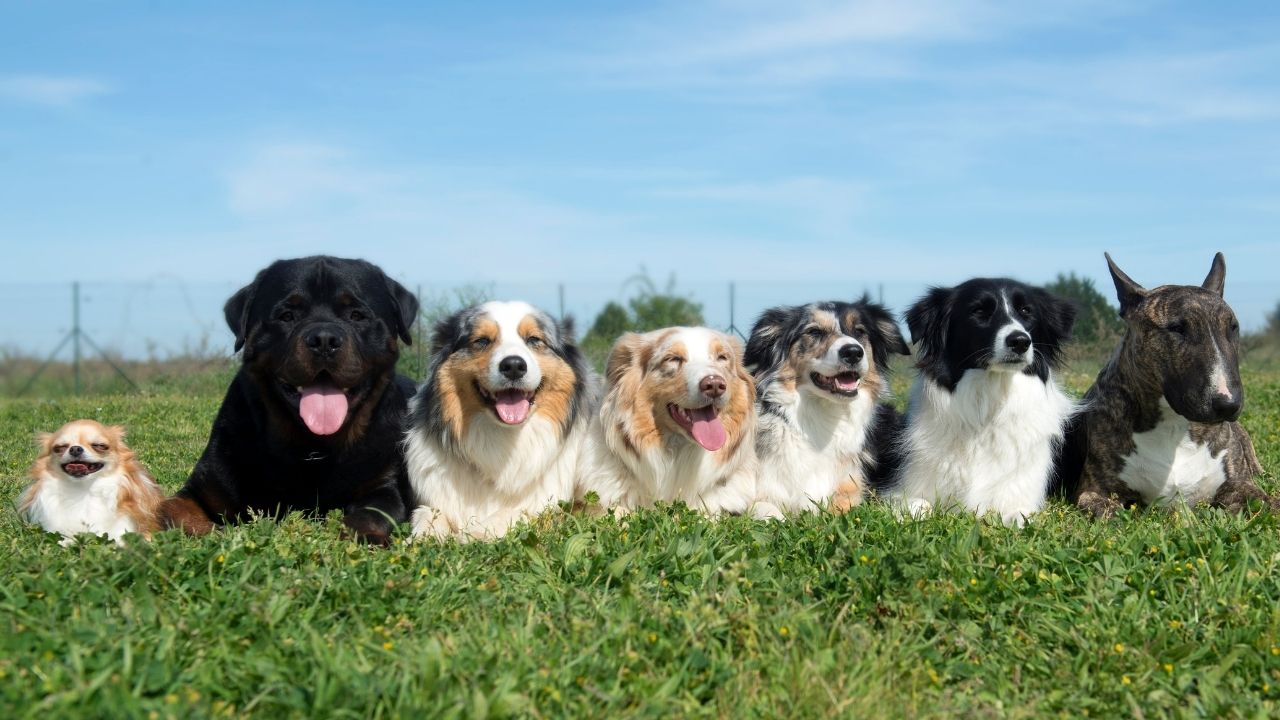
You really aren’t alone if your dog has cancer. There’s a whole pack of people and dogs walking this path with you. There’s hope, we promise!
Common Treatment Strategies for Dog Cancer
Many of the treatments we use in humans are also used in dog cancer. However, the goal in dog cancer is often less about “curing” cancer than it is in human medicine. Instead, in most cancer cases, we hope to increase the quality of life and extend life for as long as possible.
Palliative Care
You might be surprised that we put palliative care first on the list of cancer treatments, but it’s an important treatment strategy. The word palliative means to help make things better, and the first goal most veterinarians have is to relieve any suffering as soon as possible and keep it at bay for as long as possible.
For this reason, palliative care could be considered the foundation of all dog cancer treatments. The impact treatments have on your specific dog’s quality of life is important to us.
Cancer treatment can be expensive and cause side effects, and treatments do not guarantee results.
Treatment can also mean multiple trips to the veterinarian and time in isolation away from the family, which can be stressful for some dogs. Meanwhile, other dogs don’t mind going to the veterinarian and seem to shrug off examinations, blood draws, and even chemotherapy treatments.
Palliative care could mean making sure that comfort care medications like painkillers, anti-nausea drugs, mobility aids, rehabilitation therapy, or other strategies are used right away and throughout treatment.
Palliative care could also mean ensuring all these strategies are used without treating the cancer itself. Some people may prefer to spend the remaining time with their dog as a family, doing their favorite things and euthanizing when right.
Whatever your specific case is, palliative care can help.
Meanwhile, for your peace of mind, we want to remind you that dogs live in the present and don’t know or worry about cancer. As hard as it is, prioritizing their quality of life is always an acceptable option when deciding whether to continue treatment.
Chemotherapy
Chemotherapy is a commonly used treatment for cancer in both people and animals and can be given orally or intravenously at the clinic. It can be an effective way to extend your dog’s lifespan. The amount of extra time you may get with your pet depends on many factors, including how advanced the cancer is and the type of cancer they have.
Chemotherapy can cause side effects like vomiting, diarrhea, lethargy and immune system suppression, but these may not occur in all dogs. The goal of chemotherapy in dogs is to give just enough to buy some time, but not enough to cause terrible side effects like humans often experience. Your veterinary oncologist will adjust doses or use another medication if brutal side effects show up.
For this reason, chemotherapy is often well tolerated in dogs, and some sail through with few or no side effects.
If you are considering chemotherapy for your dog, it is important to communicate with your veterinarian about potential side effects and how much extra time you may get with your dog. It’s also important to understand all the costs involved. For example, you will need to get blood tests at most if not all, chemotherapy appointments to ensure your dog is strong enough to handle that day’s therapy.
Note: Adjust Your Expectations to Reality
A word of caution: dog owners sometimes overestimate the increased survival time from chemotherapy and may have false expectations, often based on what happens in humans.
But chemo in dogs is very different than chemo in humans. Humans can agree to very aggressive, “maximum tolerated dose” chemotherapy protocols.
They know the chemo will cause terrible side effects, but it will also be more effective and yield longer survival times. Please don’t assume your dog’s chemotherapy will get the same results. False expectations can lead to disappointment and distress which can make the cancer journey more difficult.2,3
Radiation
Radiation involves x-rays, gamma rays or an electron beam that are focused on the area of your dog’s cancer to kill the cancer cells. It can also be used for pain relief.
Radiation can be used alone or with other treatment methods like surgery and chemotherapy. Side effects of radiation can include red, irritated skin that typically resolves quickly.
Despite the side effects, most owners who choose radiation therapy are glad that they did and would choose it again if needed.
Limitations of radiation therapy include that it is only available at specialty hospitals and can be very expensive.4
Surgery
Surgery is an important tool in cancer treatment. For many cancers, it is the treatment of choice. Surgery can be performed to attempt to cure the cancer, reduce the size of the tumor or reduce patient discomfort.
The effect of surgery on your dog depends on their form of cancer and how advanced it is. Surgery can result in some discomfort associated with wound healing but has few other side effects.
Surgery can be expensive but is often more accessible than other treatments like radiation. You should discuss treatment options with your veterinarian to determine if surgery may be helpful for your dog’s cancer.5
Integrative Strategies
Integrative medicine is increasingly popular. It includes conventional veterinary medical treatments, and also dietary changes, supplements, acupuncture, massage, and other techniques as needed.
As with chemotherapy, radiation, and surgery, these strategies are not guaranteed. Even integrative treatments with anti-cancer benefits should be seen as helping to prolong life and increase life quality, not necessarily “cure cancer.”
That said, many veterinarians will use integrative medicine to approach cancer care. A combination of strategies can help with palliative care, support your dog’s life quality, help with pain and digestive upset, and help with side effects from conventional cancer treatments. Many of these strategies are done at home, too, so you can be actively involved in your dog’s care.
Tools and Resources
Having a pet with cancer is often stressful, overwhelming, and confusing. Utilizing your tools and resources to gain knowledge and perspective about the journey ahead can be reassuring.
Your Veterinarian
Your veterinarian is the most important resource for information about your dog’s cancer.
It is essential to have an open dialogue with your veterinarian so that they can explain the treatment options for your dog and what to expect with each different approach. It is important to have a realistic understanding of what to expect so you can make informed decisions for your dog.
The staff at your veterinary hospital will also be key in helping you to understand and manage your dog’s cancer.
Quality of Life Checklist
Your dog’s cancer journey will involve ups and downs depending on the type of cancer and treatment methods used. Some dogs can handle side effects well, while others are more seriously affected.
Throughout the cancer process, it can be helpful to utilize a quality-of-life checklist so you can gauge how your pet is handling their cancer management.6
This checklist can be shared with your veterinarian so you can work together to improve your dog’s comfort level and reduce negative side effects. It can also be used as a guide to help determine if euthanasia may be appropriate if other treatment methods have not provided enough relief.
The Dog Cancer Support group on Facebook is filled with helpful people. These are the tips they want to share with you.
Reputable Sources of Information
Most people feel confused during the cancer process and want to know more about their pet’s cancer and available options. In addition to speaking with your veterinarian it can be helpful to visit reputable sources for information on canine cancer. The following sites provide a wide range of information to help guide you in your cancer journey.
Our site, of course: DogCancer.com7
Animal Cancer Foundation:8 https://acfoundation.org/
Fetch a Cure:9 https://fetchacure.org/
Financial Assistance for Cancer Care
Cancer treatment can be expensive and is often stressful for owners who want to do everything possible to help their pet. In addition to our own resources, the following sites provide information about some cancer funds you can apply for that can help you afford cancer treatment.
Petco Love:10 https://petcolove.org/events/pet-health/pet-cancer-resource-guide/
The Animal Cancer Foundation: Financial Assistance:11 https://acfoundation.org/financial-assistance/
Emotional Support
Finding out that your dog has cancer can be upsetting, overwhelming and isolating. It can be incredibly helpful to communicate with other people who have gone through similar experiences and can offer support.
Your veterinarian is a great source of information about your dog’s cancer and treatment options, but joining support groups or forums with people on a similar journey can help you feel less alone.
Our support group on Facebook is called Dog Cancer Support: https://facebook.com/groups/dogcancersupport
The following sites have some emotional support resources:
The National Canine Cancer Foundation:12 https://acfoundation.org/financial-assistance/
Fetch a Cure Pet cancer support group:13 https://fetchacure.org/resource-library/pet-cancer-support-group/
You Aren’t Alone
You aren’t alone with your dog on your cancer journey. With millions of dogs getting a cancer diagnosis in the United States alone every year, you have great company.
Reach out for help and keep learning more, and you will be touched by how many people understand your journey and can help you cope.
Dr. Dressler and Dr. Ettinger discuss how anticipatory grief may affect you and your decisions and how to be proactive in dealing with a dog cancer diagnosis in this special episode of DOG CANCER ANSWERS.
- Dressler D, Ettinger S. The Dog Cancer Survival Guide: Full Spectrum Treatments to Optimize Your Dog’s Life Quality and Longevity. Second edition. Maui Media, LLC; 2011.
- Stephens T. The Use of Chemotherapy to Prolong the Life of Dogs Suffering from Cancer: The Ethical Dilemma. Animals. 2019;9(7):441. doi:10.3390/ani9070441
- Williams J, Phillips C, Byrd H. Factors Which Influence Owners When Deciding to Use Chemotherapy in Terminally Ill Pets. Animals. 2017;7(12):18. doi:10.3390/ani7030018
- Serras AR, Berlato D, Murphy S. Owners’ perception of their dogs’ quality of life during and after radiotherapy for cancer. J Small Anim Pract. 2019;60(5):268-273. doi:10.1111/jsap.12972
- Ehrhart N, Culp WTN. Principles of Surgical Oncology. In: Veterinary Surgical Oncology. John Wiley & Sons, Ltd,.; 2013:1-13. doi:10.1002/9781118729038.ch1
- Quality of Life Checklist. Accessed May 13, 2023. https://vet.osu.edu/vmc/sites/default/files/import/assets/pdf/hospital/companionAnimals/HonoringtheBond/HowDoIKnowWhen.pdf
- DogCancer.com. DogCancer.com. Accessed May 13, 2023. https://www.dogcancer.com/
- Animal Cancer Foundation. Accessed May 13, 2023. https://acfoundation.org/
- Pet Cancer Awareness, Education and Funding. FETCH a Cure. Accessed May 15, 2023. https://fetchacure.org/
- Financial Help for Veterinary Treatments. Petco Love. Accessed May 13, 2023. https://petcolove.org/events/pet-health/pet-cancer-resource-guide/
- Financial Assistance | Animal Cancer Foundation. Accessed May 13, 2023. https://acfoundation.org/financial-assistance/
- Contact The National Canine Cancer Foundation | The National Canine Cancer Foundation. Accessed May 15, 2023. https://wearethecure.org/connect/
- Pet Cancer Support Group. FETCH a Cure. Accessed May 15, 2023. https://fetchacure.org/resource-library/pet-cancer-support-group/
Topics
Did You Find This Helpful? Share It with Your Pack!
Use the buttons to share what you learned on social media, download a PDF, print this out, or email it to your veterinarian.
